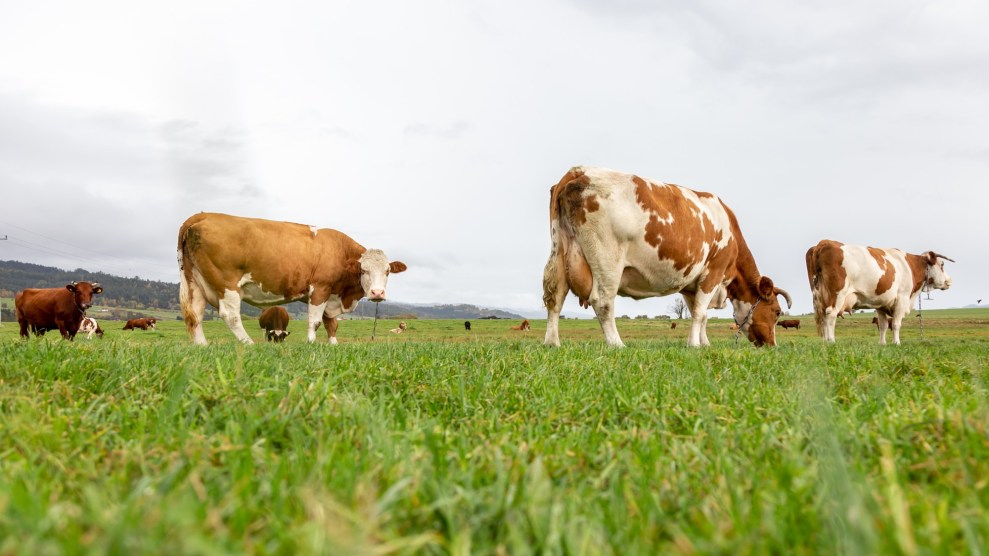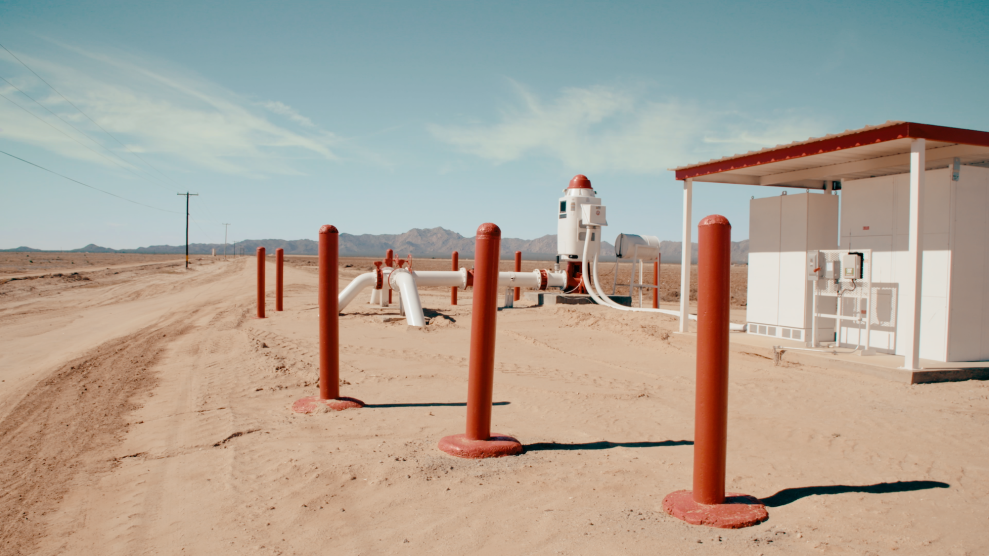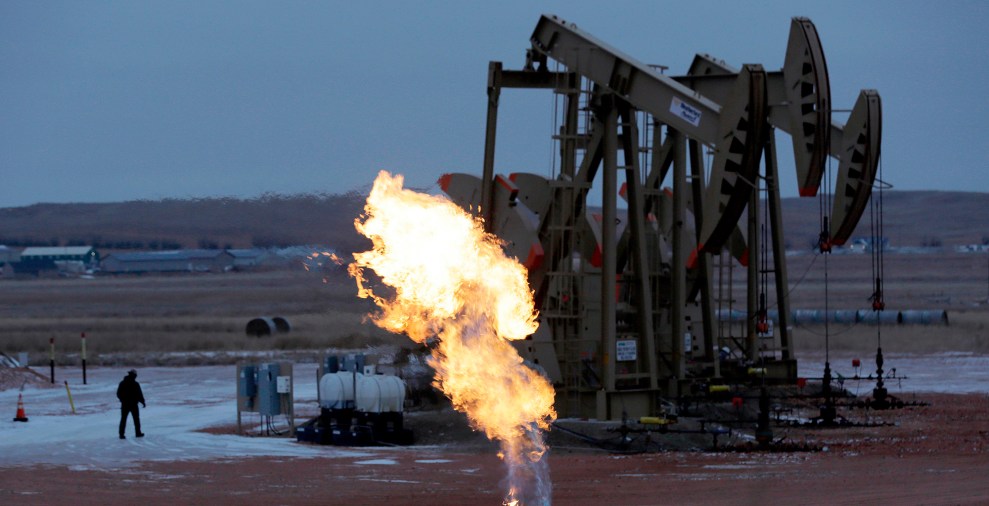
Dominika Zarzycka/Zuma
This story was originally published by the Guardian and is reproduced here as part of the Climate Desk collaboration.
Former officials in the UN’s farming wing have said they were censored, sabotaged, undermined and victimized for more than a decade after they wrote about the hugely damaging contribution of methane emissions from livestock to global heating.
Team members at the UN Food and Agriculture Organization tasked with estimating cattle’s contribution to soaring temperatures said that pressure from farm-friendly funding states was felt throughout the FAO’s Rome headquarters and coincided with attempts by FAO leadership to muzzle their work.
The allegations date back to the years after 2006, when some of the officials who spoke exclusively to the Guardian on condition of anonymity wrote “Livestock’s Long Shadow,” a landmark report that pushed farm emissions on to the climate agenda for the first time. LLS included the first tally of the meat and dairy sector’s ecological cost, attributing 18 percent of global greenhouse gas emissions to livestock, mostly cattle. It shocked an industry that had long seen the FAO as a reliable ally—and spurred an internal clampdown by FAO hierarchy, according to the officials.
“The lobbyists obviously managed to influence things,” one ex-official said. “They had a strong impact on the way things were done at the FAO and there was a lot of censorship. It was always an uphill struggle getting the documents you produced past the office for corporate communications and one had to fend off a good deal of editorial vandalism.”
Serving and former FAO experts said that between 2006 and 2019, management made numerous attempts to suppress investigations into the cow/climate change connection. Top officials rewrote and diluted key passages in another report on the same topic, “buried” another paper critical of big agriculture, excluded critical officials from meetings and summits, and briefed against their work.
“There was substantial pressure internally and there were consequences for permanent staff who worked on this, in terms of their careers. It wasn’t really a healthy environment to work in,” said another ex-official.
Scientists also expressed concern about the way the FAO’s estimate of livestock’s overall contribution to emissions is continuing to fall. The 18 percent number that was published in 2006 was revised downwards to 14.5 percent in a follow-up paper, Tackling Climate Change Emissions in 2013. It is currently being assessed at about 11.2 percent based on a new “Gleam 3.0” model.
But many scientists plot farm emissions on a very different trajectory. One recent study concluded that greenhouse gas emissions from animal products made up 20 percent of the global total and a 2021 study found that the figure should be between 16.5 percent and 28.1 percent.
A recent paper by Matthew Hayek, the assistant professor in environmental sciences at New York University, said that the FAO’s use of modeling—rather than verifiable monitoring data—could underestimate methane emissions from livestock by up to 90 percent in countries such as the US. “Models are only estimates that need to be constantly validated—and there’s been an alarming lack of validation over the now decades that this research has been produced,” he said.
Anne Mottet, the FAO’s livestock development officer, stressed that the changing figures reflected best practices and evolving methodologies, rather than an assumed cut in livestock numbers. “Livestock is part of the FAO’s strategy on climate change and we work with governments and farmers and industry on this program as well,” she said. “We can’t ignore the main actors of the sector but there has been no particular pressure from them.”
The new report’s methodology had produced more accurate figures because “we have access to better data and tools and the IPCC calculations for emissions are also being improved and updated regularly,” she added.
The Guardian conducted in-depth interviews with about 20 former and current FAO officials, and corroborated their accounts as far as possible. Speaking anonymously, the officials described a culture in which attempts to probe the connection between livestock and climate change were discouraged and, in some cases, suppressed, and where management attempted to sabotage research and research networks. Henning Steinfeld, the head of the FAO’s livestock analysis unit, said that diplomats and meat lobbyists talked to senior FAO managers and encouraged them not to invest in work that dealt with environmental impacts.
“It’s not that anyone would come to you and say: ‘Stop this! We don’t like this work,’” the source said, describing the working environment. “They would just make your work difficult. They would not invite you to a meeting with a donor. You would not get a slot when you should be speaking. You would not get the support from project development, from capacity building, from all kinds of other units in the FAO that others would get.”
Jennifer Jacquet, professor of environmental science at the University of Miami, suggested it was “no coincidence” that the FAO had rowed back on its appraisal of farm emissions, given the pressures recounted by former officials. “It’s a story as old as time, that the meat and dairy industry has enormous influence over the policymaking apparatus,” she said.
FAO data was a “prime source” of data for the UN International Panel on Climate Change’s last report on forestry and agriculture, according to its lead author, Gert Jan Nabuurs. The organization’s current focus is on making sure that scientific innovation is made as available as possible for farmers around the world. In September it hosted the first global conference on sustainable livestock transformation, which looked at animal feed, precision farming and animal genetic resources, with the goal of “sharing information about good practices and initiatives to make optimal use of natural resources and reduce greenhouse gas emissions.”
It has also, for the first time, set itself the aim of trying to outline how food systems must change for the world to stay within the globally agreed goal of limiting temperature rises to 1.5 degrees Celsius above pre-industrial levels.
The FAO and several meat and dairy industry lobbyists declined to comment for this story.












